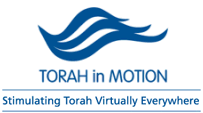 |
"Skills for Talmud Study - Seminar for Laypeople"
Program Summary

Bonayich Educational Services, Ltd.
Rabbi Dr. Pinchas Hayman
Talmud study in our day is of interest to more and more Jews, men and women alike. Yet more and more students of Talmud find themselves dependent on pre-digested or translated texts, and do not experience the intellectual and spiritual satisfaction of navigating the original texts on their own. The "Skills for Talmud Study" seminar is a first-stage, ten hour workshop designed to aid students of Talmud in mastery of the tools required for independent study.
Standard study of Torah Sheb'al Peh is configured in two stages: Mishnah, followed immediately by the study of Talmud. This approach neither reflects the actual manner of the development of the texts, nor enables the student to adequately adjust to the widely variant levels of complexity in the various types of literature in the Mishnah and the Talmud. The methodological approach used by the Rishonim divided the learning of Mishnah and Talmud into four stages, which represent increasing levels of complexity and higher-order thinking:
- Mishnah: including the relationship of Miqra and Mishnah, early topical and associative codices in Mishnah, historical and literary layers in the Mishnah, and editorial structures in Mishnah.
- Parallel Tannaitic Sources: study of the Mishnah in comparison to the relevant passages in Tosefta and beraitot, in order to understand more fully the raw material which served as the basis of the Amoraic enterprise.
- Amoraic Sources: study of amoraic memrot as commentary on Tannaitic sources and as independent legislation, but altogether in separation from the aramaic envelope which presents and analyses them. The amoraic sources are distinguished from the aramaic context by their overwhelmingly Hebrew formulation, by their labelling with the names of their tradents, and by their clear and straightforward style and practical legal occupation.
- Talmudic "Stama" Sources: study of the generally post-amoraic envelope of the sugya which presents and anaylses the earlier material. The stama envelope is characterized by its aramaic language, its anonymous presentation, its speculative, hypothetical reasoning, and its formal discussion and argumentation patterns.
These four stages are themselves sub-divided into more basic skills, which are each exemplified and then practiced on numerous unseen examples of varying levels of difficulty.
Further information is available at http://www.talmud-revadim.co.il under the "READ" section
|
 |







